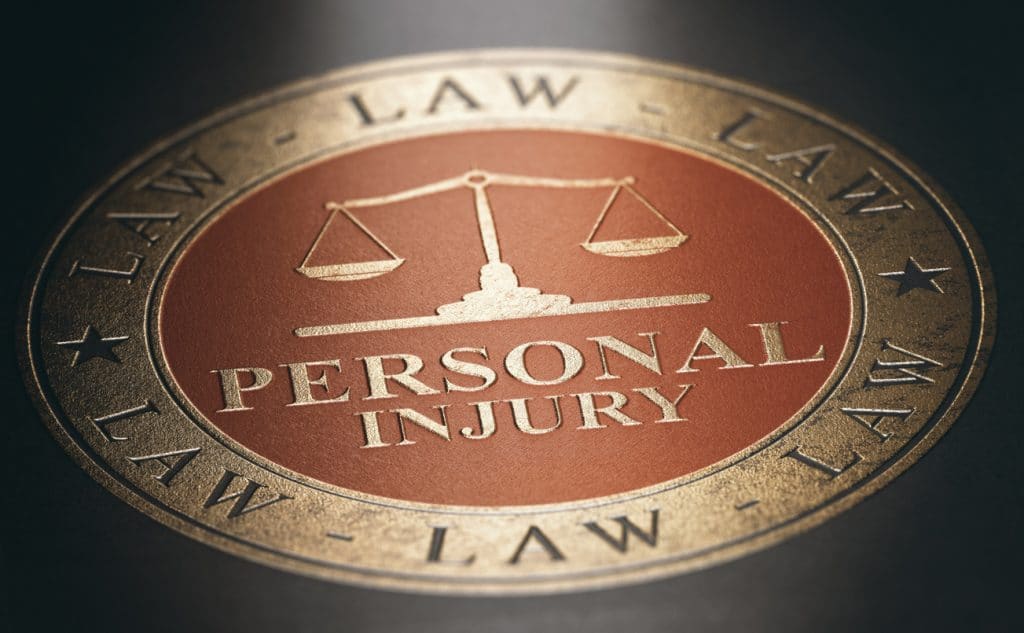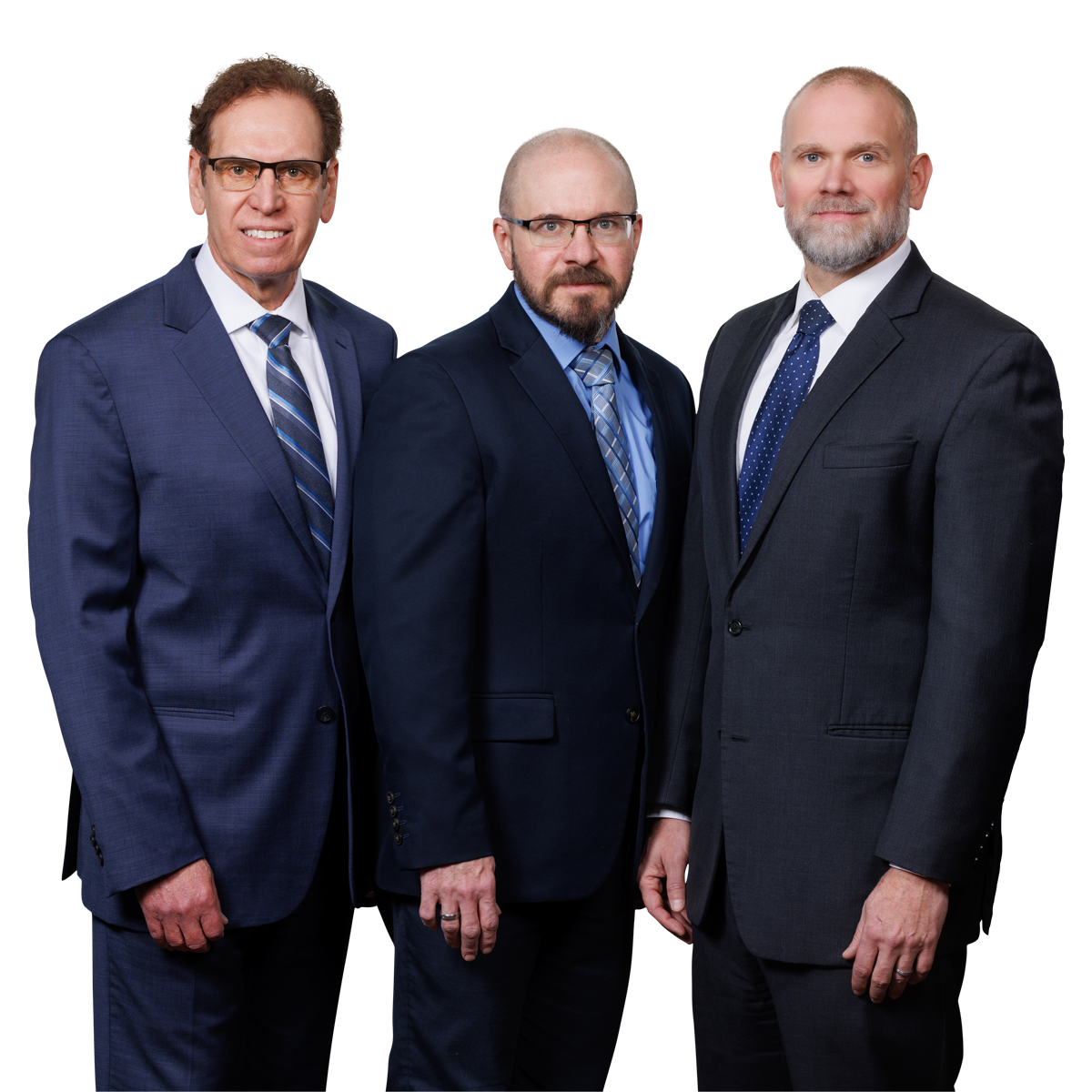This article will discuss:
- Types of personal injury claims.
- The most common categories of personal injury claims.
- The harms and losses for which compensation can be obtained.
TYPES OF PERSONAL INJURY CLAIMS

NEGLIGENT AND INTENTIONAL ACTS
Personal injury law covers a broad range of injuries most often caused by another’s negligence. Attorneys often refer to these types of incidents as “torts.” A tort is a wrongful act or an infringement of a right, other than under contract, leading to civil legal liability. (Oxford Dictionary, 2021). This area of law includes motor vehicle and semi-truck collisions and trip or slip and falls occurring in commercial stores or on governmental property. Other examples are injuries by an item that falls from a store’s shelf, natural gas or propane explosions, and injuries caused by the malfunctioning of a defective product. Toxic torts, including exposure to asbestos, radiation, methane gas or to chemicals such as Roundup or Talcum powder, are another subset of potential personal injury claims. Although not caused by another’s negligence, intentional torts, such as being battered or assaulted by another person, can also result in a personal injury claim.
WORKERS’ COMPENSATION
Workers’ compensation injuries can be differentiated from torts because these claims by employees are not necessarily caused by another’s negligence or intentional act. Generally, a workers’ compensation claim is considered to be a no-fault claim. The test for a workers’ compensation claim is whether the injury occurred within the course and scope of one’s work. However, if the injury is caused by the fault of another person, who is not a co-employee, it can give rise to both a workers’ compensation claim and a separate civil action.
Workers’ compensation coverage is mandated by state law, and penalties are assessed against employers who fail to carry workers’ compensation insurance. It is noteworthy that filing a claim against your employer, if successful, will be paid by the employer’s workers’ compensation insurance carrier, not the employer (Section 8.44.105, C.R.S.). Furthermore, it will not necessarily result in an increase in your employer’s workers’ compensation insurance rates. That your employer’s insurance rates will go up is a common misconception. These rates are indexed across job classifications statewide and not by specific employers (Quora.com, 2021). All workers’ compensation insurance rates are limited by the Colorado Insurance Commission for specific job categories. (Section 8.44.104, C.R.S.).
PERSONAL INJURY INSURANCE CLAIMS
Filing an insurance claim is usually the first step in obtaining compensation. Since many negligent acts are covered by insurance, making an insurance claim is done before filing a lawsuit. Filing a lawsuit or applying for a hearing in workers’ compensation claim, is less common than most imagine, but does become necessary when an insurance claim cannot be resolved fairly within a reasonable time. However, the majority of injury cases are resolved through negotiation, based upon the provable facts and the potential judgment, without a civil lawsuit, hearing or trial.
A personal injury insurance claim is a formal request by an injured person or his/her attorney to an insurance company for reimbursement after an incident caused by the negligent action or inaction by the insured person. If the insurance company admits the claim, which it may not do, the next step is to negotiate the value of the claim. The word negotiate is used because most often the value of a claim is in dispute. However, an injured person seldom has the experience to determine the value of a case or the knowledge of the law to negotiate on an equal footing with the insurance adjuster.
As a result of the unequal bargaining power, offers for less than the true value of the case are often accepted. Should the injured person become frustrated with the contentiousness of the negotiation process, an attorney often becomes involved. Should an agreement be reached with the assistance of an attorney, the insurance carrier issues payment to the attorney on behalf of the injured party. The check is made payable to the injured person and the attorney. The attorney’s name is on the check in order to get paid, but importantly, also so that a portion of the funds can be put in a trust account to address hospital or other liens against the settlement funds. Negotiation to fairly reduce these outstanding medical bills is a great benefit to the client and a good reason to have an attorney involved.
MOST COMMON PERSONAL INJURY CLAIMS
MOTOR VEHICLE COLLISIONS
Motor vehicle accidents are one of the most common incidents resulting in personal injury claims. When collisions occur, most often a ticket or citation is issued to the at-fault driver by law enforcement. When there is apparent liability for the collision and resulting harm, there are several types of insurance coverage an injured person can potentially seek: (1) liability insurance; (2) medical payments coverage; (3) uninsured motorist (UM); and, underinsured motorist (UIM).
- Liability coverage allows one to claim compensation from the insurance company insuring the at-fault driver. However, when fault is contested or when the at-fault driver has no insurance coverage the matter is more complicated.
- In Colorado, Med Pay coverage is mandatory, no-fault coverage. However, it can be waived in writing by the insured driver. With Med Pay coverage, the injured party’s insurance provides initial coverage and avoids the necessity of immediately obtaining liability coverage from the at-fault driver. The minimum coverage in Colorado is currently $5,000. Such coverage is paid initially to first responders, usually the ambulance and the emergency department bills.
- UM or UIM coverage also comes from the driver or passenger who did not cause the collision. When there is no or inadequate insurance coverage available from the at-fault driver, this coverage becomes available. In Colorado, UM/UIM coverage is mandatory unless waived in writing by the insured driver. Using one’s own insurance coverage to pay for losses or to supplement the payment from the at-fault driver will not cause the UM/UIM coverage to increase in price simply because the claim is paid, (Section 10-4-628(1)(a), C.R.S.). This section provides in pertinent part: No insurer shall…increase the premium for…the applicant, insured, permissive user, or any resident of the household of the applicant or insured who has had an accident or accidents that are not the fault of such named applicant, insured, household member, or permissive user.
TRIP/SLIP AND FALL CASES
Trip/Slip and fall claims, can be made when commercial business owners of property allow a “dangerous condition” on their premises (Section 13-21-115(2), C.R.S.). However, not all slip and falls result in liability of the property owner. The injured party must not be primarily responsible for the incident and must have acted reasonably under the circumstances. Liability provisions under Colorado law are different for the three categories of persons who are injured on another’s property. These categories are: invitees; licensees; and, trespassers.
MEDICAL MALPRACTICE CASES
Medical malpractice claims can be brought if an independent medical practitioner, who was not involved in the medical treatment, determines in a written statement, usually provided to one’s attorney, that the medical provider involved did not act in accordance with the standard of care expected of the medical provider. (Section 13-64-403(12)(b)).
DOG BITE CASES
Dog attack/bite claims are brought against the dog owner when the owner fails to reasonably protect the public from the dog in question. These claims are governed by Colorado Statue (Section 12-21-124(2) C.R.S.).
INTENTIONAL ACTS
Assault and intentional torts claims cover cases when a third party purposefully causes physical harm to another. These are intentional acts, which may result in criminal charges, unlike most acts of negligence, or carelessness. Intentional torts can result in both criminal charges and civil court actions.
DEFAMATION CASES
Defamation claims are also considered personal injury claims. These claims seek compensation for financial losses due to false statements that harm another’s reputation. In reality, such actions seldom are brought. This is due to the fact that truth of the statement is a defense. Furthermore, one must show that they have suffered financial loss, due to the statement, not just that the statement is false. “Talking trash,” about another person rarely results in the offended party obtaining a successful judgment.
HARMS & LOSSES
The cost of medical treatment and future loss of earnings caused by the injury can escalate quickly, so seeking compensation is often necessary, especially in cases of severe injury. The above list of claim types is an indication of the variety of personal injury claims. The harms and losses or “damages” in personal injury cases, for which one can seek reimbursement, include: expenses for past and future medical treatment; loss of past and future earning damages; damage or loss of to personal property; loss of the ability to perform household services; permanent impairment and disfigurement; pain and suffering, inconvenience, emotional stress, and loss of enjoyment of life. Collecting information or evidence of such losses is essential in order to obtain adequate compensation. For this reason, billing records, physician narratives, proof of lost wages and statements from employers, friends and family become necessary.

